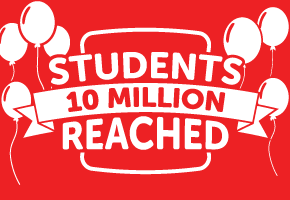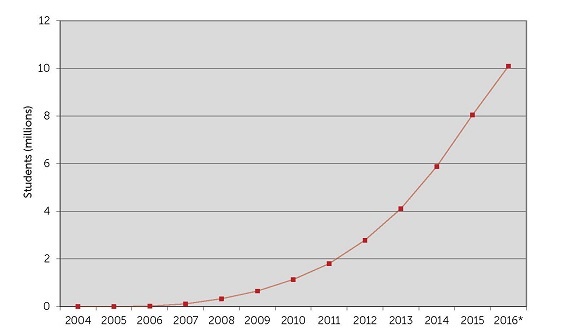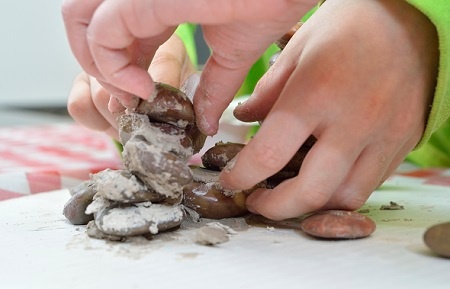 |
10 million of anything is a lot, and a landmark to celebrate. This past year, for example, Chevrolet turned out its 10 millionth Malibu, New York’s CitiBikes celebrated 10 million rides, and Apple Music hit 10 million subscribers. Here at Engineering is Elementary, we’re celebrating a really meaningful landmark. Our award-winning curriculum has reached 10 million students!
We’ve come a long way since 2004, when a team of curriculum developers at the Museum of Science, Boston invited eight Boston-area teachers to pilot-test a novel curriculum module with their students. During that first test, a total of 200 children got a chance to try their hand at engineering a sturdy bridge, or making sticky, strong mortar for a stone wall.
Exponential Growth
 |
| Use of the EiE curriculum keeps growing! *Year to date |
We kept designing and testing and improving, and in 2007, we released our first two completed EiE curriculum units, Catching the Wind: Designing Windmills and Water, Water Everywhere: Designing Water Filters. All 20 units were completed in 2011. We’ve seen exponential growth in reach ever since—growth that makes us the nation’s largest elementary engineering curriculum.
How many is 10 million? The state of North Carolina has 10 million residents; so does the city of London. A stack of 10 million dollar bills would reach 3,330 feet into the air. A trip of 10 million miles would take you around the Earth 400 times.
Tell It By Numbers
 |
| Will this mortar hold stones in place? “Designing Walls” was one of the first EiE units. |
Here are a few more numbers. You can find schools that teach with EiE in all 50 U.S. states and the District of Columbia: public schools, private schools, charter schools, military schools, and home schools. More than 100,000 elementary teachers have taught EiE lessons; 18,000 teachers have attended EiE-led professional development workshops; and many more have attended workshops facilitated by the hundreds of EiE professional development collaborators who are distributed across the country.
Real Results
| CLICK TO WATCH: Students who learn with EiE see themselves as future engineers. Full-screen version here. |
More important than the numbers are the results. EiE helps schools meet the expectations of the new Next Generation Science Standards, which place unprecedented emphasis on integrating engineering with K-12 science education. EiE helps ALL students learn science and engineering effectively, and it is notably effective for students from populations historically underrepresented in STEM careers, including blacks, Hispanics, and girls. And students who learn with EiE show improved attitudes toward science and engineering as fields of study and as future careers.
We’re excited to hit the 10 million mark, but we’re not stopping there. In the next few years we’ll
- expand our afterschool offerings,
- launch a PreK-K engineering curriculum,
- report on the findings from a major efficacy research study,
- continue to grow our network of professional development providers,
- grow our menu of professional development resources, and
- support teachers through scholarships and online resources.
We thank the thousands of teachers, educators, and collaborators who have helped us to reach this point and the sponsors who have generously supported our research, curriculum development, and professional development efforts. We’re excited to work toward the next big landmark with you!
Engineering is Elementary is a project of the National Center for Technological Literacy® at the Museum of Science, Boston.








